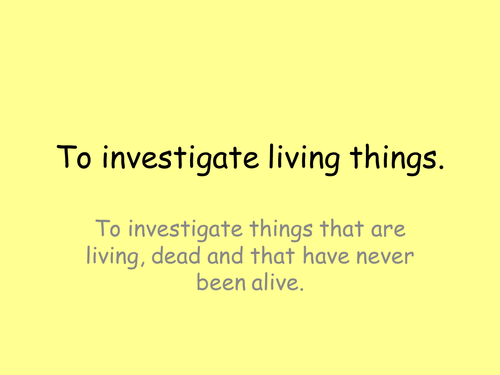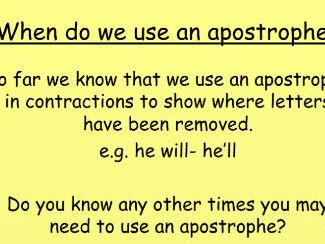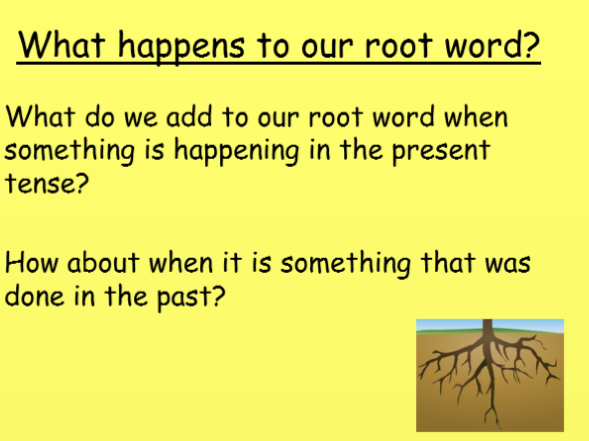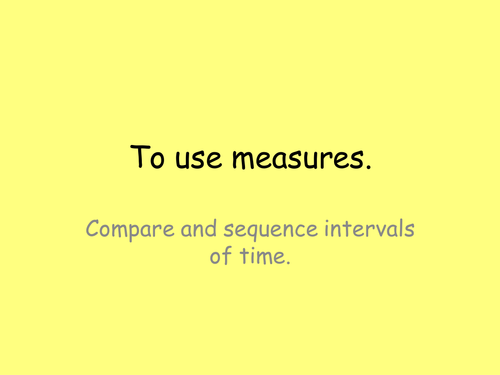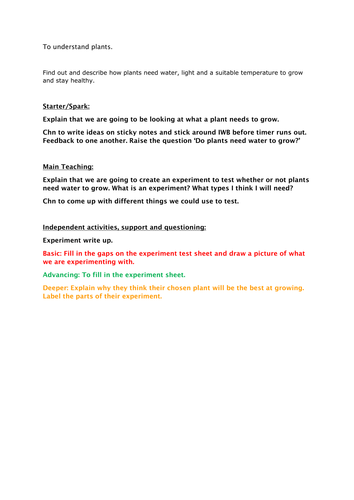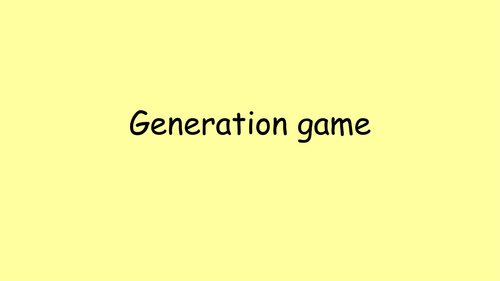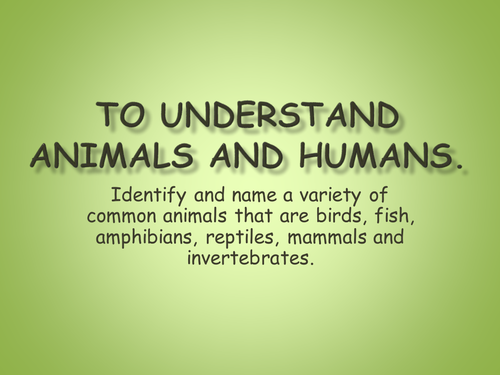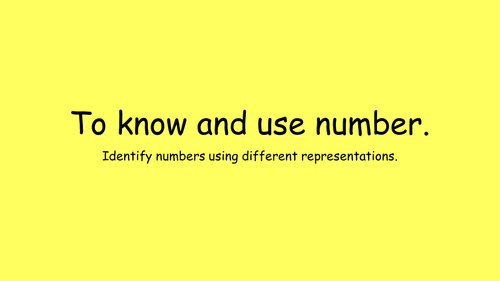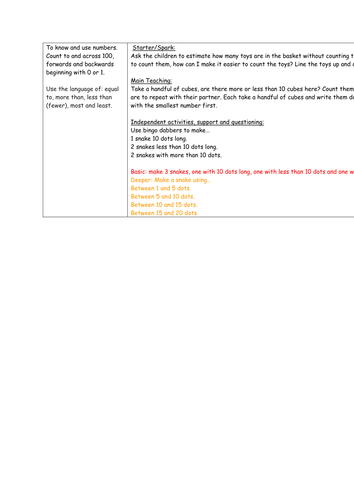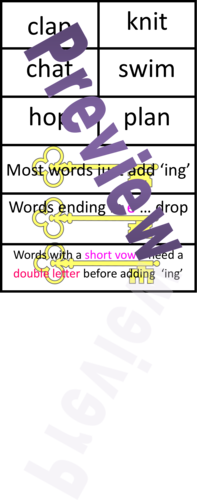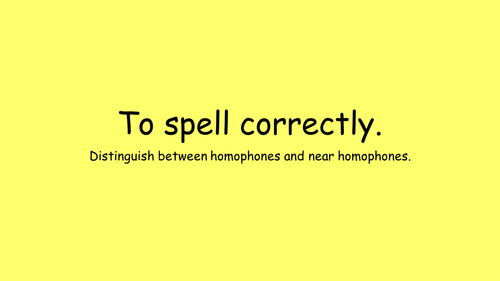
71Uploads
55k+Views
17k+Downloads
All resources

To understand animals and humans- investigate things that are living, dead and were never alive.
A lesson created to get children to think about things that are living, dead or were never alive in line with the new national curriculum. Lesson was created for KS1. The pack contains a powerpoint presentation which is easy to follow with a starter activity which children can do on the carpet or at their tables where they can discuss their thoughts. Also included is a table for the children to investigate living, dead and never alive objects around the school and then place in the correct column.

Time interval problems KS1
A presentation and activity for working out the new time. Comes with a starter recap and a problem for the children to solve altogether. Main teaching includes differentiated activities for children to complete. LA activity working out what time it will be once an hour is added to o'clock, MA working out the time once an hour is added to o'clock and half past and HA activity adding increments of 5 minutes to find the new time. Children are to work out the new times and draw the hands on the clock to show these times.

Lost and Found Themed Investigating Materials Lesson Science Year 1 and 2
A resource that was created for use in year 1 and 2 lesson in Science. The lesson was used for a learning together Science session when investigating materials but can also be used within the classroom with just the children. The children were to think about materials that sink and float, and those which are waterproof and what each of those words mean. The children were then asked to design and label a boat for the boy and the penguin to travel to the South Pole using the 'junk' materials that they had brought in. They were then asked to make their design, test it and then evaluate at the end. This pack contains the powerpoint used to explain what to do for the children and also looked at the meaning of the different words we were talking about. It also contains the experiment sheet.

Year 1 Tally Charts using Jungle animals and handling data
A resource created to teach year 1 children about handling data and creating tally charts. Children were told that we are going on a trip to the jungle and that in their packs there were some animals that needed to be released back into the wild. The first activity was to sort the animals (this was the whole session for my LA children), they then used the animal pictures to complete the tally chart (a discussion happened here to recap what a tally chart is and what to do when we count five of something). Afterwards the children were to answer the questions about their tally chart. As a next step or reasoning question the children were asked to write their own question to ask someone about the tally chart, there was a frame to support children in this.

Year 1 adding money and giving change
A lesson created to teach children about adding different amounts of money. The children were to choose toppings from the pancake shop and to add them and work out how much money it would cost them to buy the pancake. LA children are to add two different toppings, MA to add 3 toppings (adding three one-digit numbers is part of the curriculum) and HA children are to work out change. This pack contains a lesson plan, differentiated activities and a powerpoint presentation.

Teaching year 1/2 about the use of possessive apostrophe and creating a character
A lesson used to introduce my year 1 class to the possessive apostrophe (they have already seen apostrophes in contractions) when creating their own fairy tale character ready for a story they are going to write. The pack includes a powerpoint which introduces the children to the possessive apostrophe and then gets them to apply what they have learnt by asking them to choose the correct use of the possessive apostrophe. I then asked the children to create their own fairy tale character using the character description frame. Afterwards we wrote about our character using imaginative description and using the possessive apostrophe. The pack also contains a blooms taxonomy higher level sticker for your early finishers and a writing frame for LA children to use when describing their character.

Year 1- using correct tenses and adding the correct suffix to the root word.
A lesson created to teach year 1 pupils about the past and present tense and how to add -ing and -ed to change the verb from past to present tense within writing. The presentation starts the children thinking about the difference between a sentence in the past and one in the present. It then looks at how to add -ed and -ing to the root word to change its meaning. For their independent tasks the children are to write two sentences about the picture; one present and one past tense, using what they have learnt about suffixes. The powerpoint is linked to our theme which is Antarctica and penguins.

Time interval problems year 1
A lesson on time interval problems for year 1. The powerpoint presentation recaps what the children already know about intervals of time and the clock and then asks them to solve a word problem on the board using their clocks and circular card folded into halves and quarters. Also included are differentiated word problems for quarter, half and full hours. The LA problems start from o'clock whereas the HA start from various points around the clock.

'but, however, on the other hand' teaching resource Year 2.
A range of different resources used to teach the children how to use 'but, however and on the other hand' within a sentence. Contains starter and main teaching activity as well as a lesson plan.

Year 1 Science Plants
A resource created to teach year 1 children about what a plant needs to survive. We began thinking about whether a plant needed water to grow and moved on to creating an experiment to prove it.

Phonics Generation game /ch/ alternative pronunciation
A resource used in my year 1 phonics lesson when teaching the children about the different pronunciations for the /ch/ grapheme. Children were to use the pictures to work out what each word said, afterwards we identified the different pronunciations that they found.

Identifying and describing different types of animals.
A group of resources used when teaching year 1 about different types of animals and their features during our animals and humans science topic. Includes a lesson plan explaining how I used the different resources, a PowerPoint presentation, facts and pictures for the children to investigate and an activity to go in their books. I aimed for the children to investigate and become experts themselves. I had a recording of Peter Pan asking the children for help to discover what type of animal the Neverbeast was as my hook for the lesson. Peter Pan wanted to set a trap for the Neverbeast but wasn't sure where to put it. I also had animal noises playing in the background throughout.

Adding two one-digit numbers year 1
This pack contains a power point and activity for teaching year one how to add two one-digit numbers. The power point uses examples of adding two one-digit numbers using fruit and then asks the children how we would write a number sentence to go with the pictures. The activity is a continuation of this with the children counting the fruit in the picture and writing the number sentence below before writing the answer. The pack also comes with a next step activity where the children are to work out the missing number in the number sentence.

Year 1- more and less than activity working with numbers to 20.
A year 1 lesson where children are beginning to look at finding more or less than numbers to 10. Includes a lesson plan which includes a starter where children are beginning to estimate and thinking about more efficient ways to count objects. Also comes with an activity where children are to create snakes using more or less than a certain number of dots. The pack comes with differentiated question cards which can be cut out or printed on stickers to put into books or used on the table for the children to make using cubes. The red snakes are for LA, green for MA and blue for HA. The lesson plan also comes with a 'where next' activity which gets children thinking about counting in 5's as well as number order.

A history and geography lesson for year one looking at homes around the world
This pack comes with a starter activity where the children are to think about where they live and describe their house and their family. This then moves on to looking about homes around the world and thinking about who lives in the different houses, children are to write a sentence about who they think lives in the different houses or may have lived there at some point in the past. The power point then goes through each of the pictures and explains where the houses can be found and what they are made of.

Persuasive writing toolbox
A resource created to be an aid on tables when year 3 children were using persuasive writing. Includes sign to go on the lid of the toolbox and pictures of tools to stick the persuasive techniques on. I bought cheap plastic boxes to create the toolboxes with,

Polar Express Activities to teach time.
A resource used for year 3 children when looking at time. The resource was created to get the children to think about different time intervals. The activity comes with question cards which ask the children to look at the different trains on the time table and work out how long it has taken for the trains to get from the station to the North Pole. The questions range from working out time intervals within and over an hour. The questions are differentiated with some asking the children to identify which train left at a certain time and others to work out the shortest and longest journey. The timetable and tickets are both Polar Express themed.

Grammar Suffixes Fly Swatting Game
A resource designed to get children excited about grammar. The idea of the game is for children to investigate what happens when we add a suffix to words. One person is to read the word out to their two team mates who must use a fly swatter to choose the options relating to what they must do before adding the suffix to their words e.g. double the letter before it or remove a letter. The first to guess right gets to keep the word card. If children are struggling they can choose one of the magic clue keys to help them.

Using conjunctions and interesting sentence starts
A presentation and resource created to help year 1 children to edit their work, include conjunctions in their writing and use a range of interesting sentence starts. At the end of the activity I asked children to look at the success criteria they had included in their work and rate whether they deserved 1, 2 or 3 stars, I then asked the children to stand in groups depending on how many they had included, the children were then given another opportunity to fix their work.

GP&S Homophones and near homophones year 1 and 2
A lesson created to teach year 1 and 2 about homophones and near homophones. Can be used as a 20 minute grammar session or whole lesson depending on the depth you want to go into. Pack includes a lesson plan, a powerpoint presentation and the homophones hunt activity.

